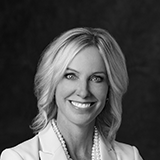In a highly-anticipated move, on Tuesday Governor Walz issued Executive Order 20-51, which paves the way for resuming non-essential, elective procedures under certain specific requirements for prioritization of cases, preservation of PPE and infection control measures. On March 23, 2020, Governor Walz had ordered that all non-essential and elective surgeries and procedures – medical and dental – that utilize ventilators or personal protective equipment (PPE) be postponed.
Now, effective May 11, 2020, veterinary, medical or dental procedures utilizing PPE or ventilators are permissible if the facility providing such services develops and implements an extremely detailed written plan following the specific requirements set forth in the Minnesota Department of Health (MDH) guidance entitled Requiring Facilities to Prioritize Surgeries and Procedures and Provide Safe Environment during COVID-19 Peacetime Emergency (“Plan Guidance”), which can be found here.
At a minimum, a Plan must adequately address seven areas, summarized below:
- Prioritization of procedures: For each procedure, the Plan must require that the provider document an assessment of the risks and benefits associated with conducting the procedure during the pandemic based on that provider’s professional judgment. Cases where delaying procedures places patients at higher risk must be prioritized.
- Community considerations: Facilities are required to collaborate with other stakeholders and facilities in the same community, including the applicable regional health care coalition, to ensure adequate supplies and capacity are available in the event of a surge in COVID-19 cases without resorting to crisis standards of care.
- Adequate screening and testing: The facility must develop protocols to screen all staff, patients and visitors for symptoms of COVID-19. Notably, the facility must either develop a protocol for testing patients prior to conducting a procedure or assume that all patients are potentially COVID-19 positive and take all attendant precautions.
- Use and supply of PPE: Facility staff must be trained and up-to-date on MDH, CDC and professional licensing board recommendations for PPE and must conduct routine compliance audits. Procedures with a high risk for aerosol transmission must utilize appropriate protection (i.e., face shield and a N95 or higher respirator).
- Commercial sources of PPE: The facility can only utilize commercial PPE supply chains for use in non-COVID-19 procedures and must have a sufficient reserve of PPE to account for potential commercial supply chain shortages and COVID-19 surges.
- Social distancing and other infection prevention measures: The facility must implement protocols and physical measures to provide for social distancing, including requiring patients and visitors to wear facemasks, which the facility must be prepared to provide when necessary.
- Patient consultation: Each patient must be informed of the risks of COVID-19 transmission associated with the applicable procedure and that procedures are subject to cancellation on short notice. Facilities will need to develop new, compliant informed consent forms for patients.
Even though providers may understandably feel eager to resume treatment services as soon as possible, the creation and implementation of the required Plan utilizing the Plan Guidance should not be rushed or overly simplified. MDH, state licensing boards and any other applicable state facility regulatory or licensing authorities will be monitoring compliance with the Plan Guidance and have authority to enforce this Order if a facility or provider fails to implement the Plan Guidance, fails to adhere to its Plan or retaliates against patients, visitors or staff who raise concerns regarding the Plan Guidance. In addition, DLI may issue citations, civil penalties or even closure orders to facilities with unsafe or unhealthy conditions and may penalize employers that retaliate against workers who raise health and safety concerns.
This guidance is current as of May 5, 2020, at 5 pm Central Time. This is a rapidly-evolving situation and circumstances and guidance may change.



